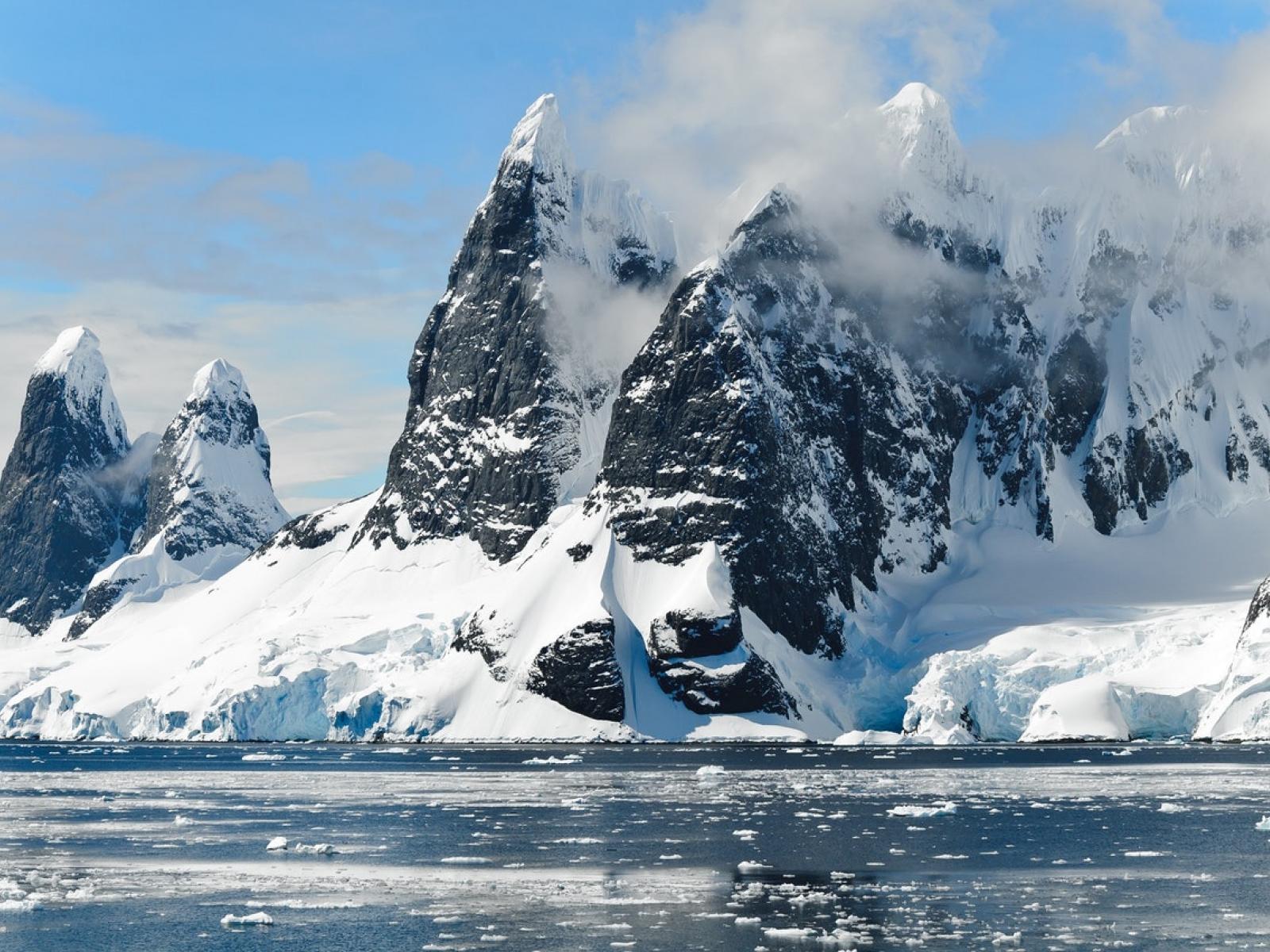Warmer Southern Ocean Leads to More Antarctic Snow
Increased evaporation in the Southern Ocean contributes to more snow over Antarctica.

Sea ice cover in the Southern Ocean affects clouds, precipitation, and surface snow on Antarctica.
Photo by Pixabay
The Science
The evolution of the Antarctic Ice Sheet is a balance between its growth from snowfall, and loss from melting. Snowfall largely determines this mass balance, and experimental evidence suggests surface mass of the Antarctic Ice Sheet increases in a warming climate due to increased snowfall. In the cold and dry Antarctic environment, however, the local moisture source is very weak. This means formation of Antarctic precipitation relies on moisture transport from the surrounding oceans. Oceanic areas close to Antarctica are ice-covered most of the time, but the sea ice cover extent varies naturally year by year. A team of researchers led by scientists at the U.S. Department of Energy’s Pacific Northwest National Laboratory wanted to learn more about how sea ice in the Southern Ocean might regulate changes in the amount and location of Antarctic precipitation. They found more surface evaporation over the Southern Ocean in lower sea ice years increases moisture supply for Antarctic precipitation, especially over western Antarctica. The impact of sea ice anomalies on basin-scale Antarctic precipitation depends on changes in atmospheric circulation associated with changes in sea ice concentration and sea surface temperature.
The Impact
The findings from this study suggest that Southern Ocean sea ice cover affects moisture sources for Antarctic precipitation. Seasonal and basin-scale spatial variations in sea ice are largely determined by the local atmospheric circulation pattern. Changes in this circulation pattern come from natural variability or responses to sea ice and temperature changes. A more detailed understanding of the evolution of the Antarctic Ice Sheet informs predictions of global sea level change in a warming climate.
Summary
Researchers examined the response of global surface evaporation, moisture transport, and the Antarctic precipitation to sea ice anomalies in the Southern Ocean. They used the Community Earth System Model, equipped with a unique water tagging capability, to perform sensitivity experiments with perturbations in sea ice concentrations. The mean, 10 percent lowest, and 10 percent highest years for sea ice concentrations, respectively, from a 1,000-year, fully coupled simulation under natural conditions are used as prescribed boundary conditions for 10-year sensitivity experiments. They found local moisture content increases significantly in response to the lower sea ice concentrations in the Southern Ocean, especially in the winter season. This leads to a large increase in Antarctic basin-scale precipitation when there is a strong meridional moisture flux towards the basin. The Southern Ocean sea ice anomalies also change the contribution of remote moisture sources to Antarctic precipitation.
Funding
This research is based on work that was supported by the U.S. Department of Energy Office of Science, Biological and Environmental Research as part of the Regional and Global Model Analysis program area. National Center for Atmospheric Research’s Computational and Information Systems Laboratory, sponsored by the National Science Foundation, provided the high-performance computing support.
Contact
Published: July 13, 2020
H. Wang, J. G. Fyke, J. T. M. Lenaerts, J. M. Nusbaumer, H. Singh, D. Noone, P. J. Rasch, and R. Zhang, “Influence of sea-ice anomalies on Antarctic precipitation using source attribution in the Community Earth System Model.” The Cryosphere 14, 429–444 (2020). DOI: 10.5194/tc-14-429-2020